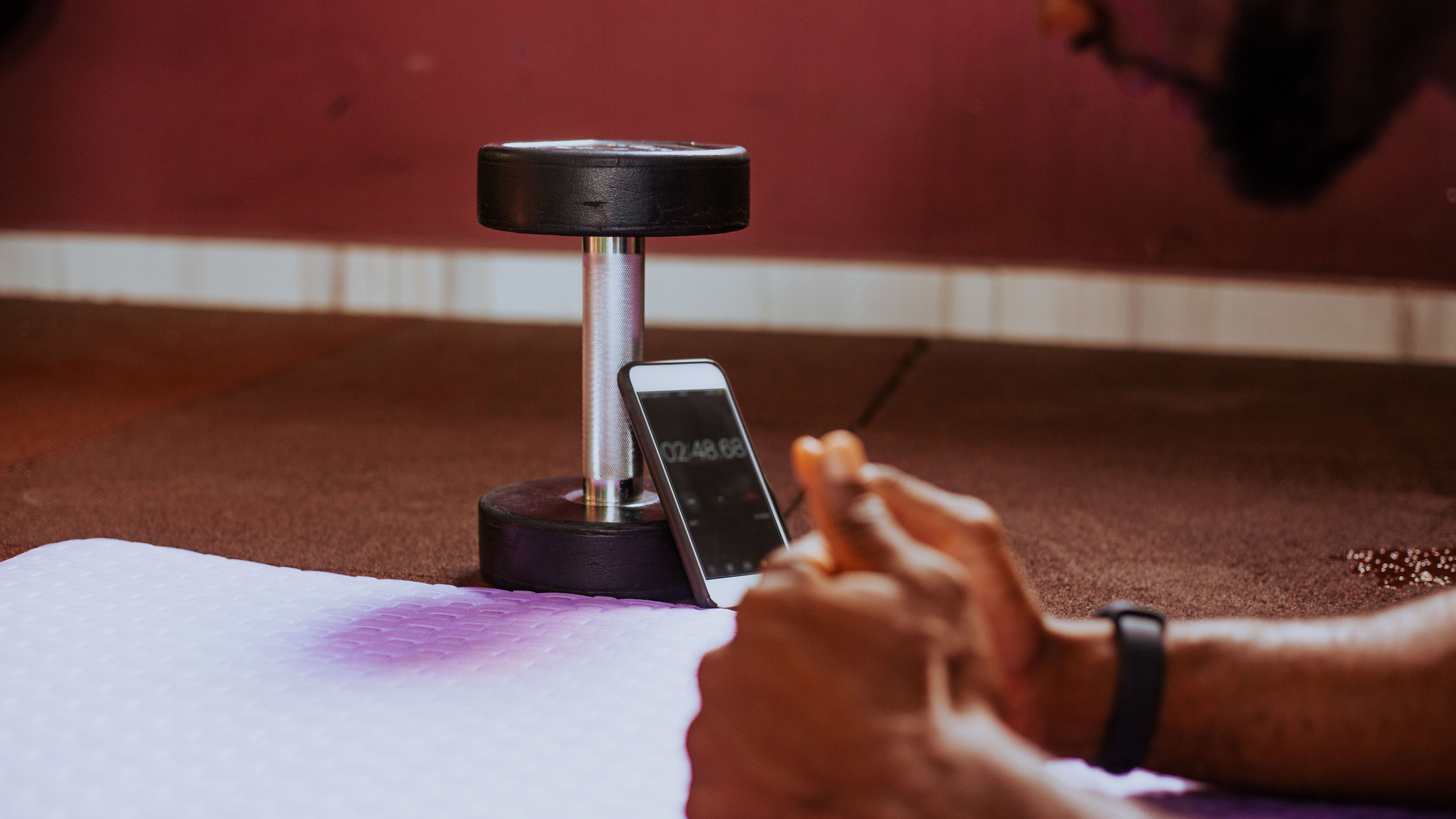3 Escalating Density Training Workouts To Maximize Your Gains
Use these expert-approved EDT routines to get through more work in the easiest and fastest way possible

Workout intensity, volume and tempo are three training variables that are often tinkered with to help people get fitter and stronger in the weights room. Adjusting training density is another option that is ruthlessly effective at helping break through strength plateaus, but one that is criminally underused.
The easiest way to start using density in your workouts is to try Escalating Density Training (EDT). This approach is designed to boost muscular strength and endurance, as well as the body’s ability to recover quickly, using a method that forces you to accomplish a maximal number of repetitions of a pair of exercises within a given time period.
Here, we’ll explain how it works and why you may want to incorporate it into your routine, and arm you with three expert-approved EDT workouts that will help smash through any training plateau standing in your way.
What is Escalating Density Training?
EDT is a workout principle first devised by renowned strength coach Charles Staley and published in the book Muscle Logic: Escalating Density Training Changes The Rules For Maximum-Impact Weight Training.
His theory goes that rather than obsessing about how many sets and reps you should perform for each exercise to improve strength, what really matters is the total workload you put in over the course of a session. EDT is his solution to achieve the maximum amount of total workload in a session in the easiest, fastest and most physically tolerable way possible.
In simple terms, EDT involves pairing two exercises, which will usually be moves that target opposing (or antagonistic) muscle groups, and working through those movements back-to-back in a fairly short period of time, aiming to get through as many rounds as possible.
For example, you could pair a bench press with a bent-over row in this format:
15-minute AMRAP
- 5 x bench press @ 60% of your 1RM
- 5 x bent-over row @ 60% of your 1RM
“To get fitter and stronger we’re always looking for ways in which you can create and drive progression,” says personal trainer and sports scientist Luke Worthington.
Sign up for workout ideas, training advice, reviews of the latest gear and more.
“The goal isn’t to increase the time under tension or the load you lift,” he says. “It doesn’t require you to lift heavier than you usually do. Instead, you should aim to lift around 60% of your one-rep max for each exercise.”
What are the benefits of Escalating Density Training?
“EDT is designed to improve your work capacity so it tends to be more of a body composition tool than a strength tool,” says Worthington.
He calls it “a very efficient way of working” and explains that you don’t always know how long a workout will take when it’s formatted by sets and reps, whereas an EDT block allows you to get through a lot of work in a specific amount of time. For this reason, Worthington prefers to use EDT for 10- or 15-minute workout finishers in his own training or when programming workouts for clients.
And to ensure as much work is completed before fatigue sets in, he tends to use pairs of exercises that target different muscle groups rather than hammer the same ones. “If you’re short on time, pairing antagonistic exercises together in an EDT block means one is working while the other is resting,” he says.
Is Escalating Density Training better than progressive overload?
One of the most popular training protocols adopted by people who lift weights is progressive overload. This involves gradually increasing the workload you get through every time you repeat a workout, either by upping the load you lift for each exercise or the volume (sets and reps) you complete for each.
It’s a proven method for building strength and increasing muscle mass. However, if you’ve been repeating the same workout or group of workouts for a while, such as for more than eight weeks, you might reach a point where your gains start to plateau.
“For everybody who exercises, there will come a point at which you can’t add any more weight because you’ve reached your maximum strength for that movement, or when the risk-reward calculation for adding more weight starts to tip against you,” says Worthington.
It’s at this point that introducing an EDT finisher can shake up your routine and give your body a fresh stimulus that will help break through training plateaus, both physically and mentally.
Given you will be lifting only around 60% of your one-rep max for the exercises within the EDT set, the risk-reward balance will tip back in your favor, allowing you to safely develop muscular endurance and an enhanced work capacity that will boost your regular progressive overload workouts next time round.
One side point: if you can’t crack those training plateaus and start to feel burned out, you could be due a deload week to help recharge your batteries.
3 Escalating Density Training Workouts To Spice Up Your Routine
Upper-Body EDT Workout
Time 10min
1 Biceps curl
Reps 10
Stand with your feet shoulder-width apart and a slight bend in your knees, holding a dumbbell in each hand by your thighs, palms facing forward. Keep your elbows tight to your sides throughout, your chest and head facing forward, and back straight as you curl the weights up toward your shoulders. Squeeze your biceps hard at the top of the lift, then lower under control.
2 Triceps pull-down
Reps 10
Set the cable machine up with the bar attachment at head height. Hold the bar with palms facing down and stand upright with your back straight and your elbows tucked in to your sides. Stand with your feet hip-width apart, or place one in front of the other if it helps you balance. Pull the bar down until it touches your thighs, pause to squeeze your triceps at the bottom of the move, then slowly allow the bar to return to the starting position.
Lower-Body EDT Workout
Time 10min
1 Leg extension
Reps 10
Sit up straight on the leg extension machine—imagine you have a seat belt pulling your waist into the seat. Adjust the pad so it sits on top of your shins just above your feet, which should be pointing forward. Hold the side bars. Ensuring that you are using your quads to power the movement, rather than kicking up with your feet, extend your legs straight out in front of you. Then slowly return them to the starting position.
2 Leg curl
Reps 10
Set up the leg curl machine so that your lower back is well supported. Put your legs on the padded lever so it sits just below your calf muscles, and set up the lap pad so it sits on your thighs just above the knees. Position your legs so they are straight out in front of you and grasp the side handles on the machine. Curl your legs to bring your heels toward your glutes, pause for one second, then slowly return your feet to the starting position.
Core EDT Workout
Time 10min
1 Crunch
Reps 10
Lie on your back with your feet flat on the floor and your knees bent at 90˚. Press your lower back into the floor to engage your pelvic floor. Interlink your fingers and place them behind your head to help support your neck, then lift your shoulders off the floor. Pause briefly, then lower under control.
2 Glute bridge
Reps 10
Lie on your back with your knees bent and feet flat on the floor. Keep your arms by your sides with palms down for balance. Press through your heels to lift your hips off the floor until your knees, hips and shoulders form a straight line. Squeeze your glutes hard and keep your abs drawn in so you don’t overextend your back during the exercise. Hold this bridge position for a couple of seconds. Lower under control to tap the floor with your bum to maintain tension in your glutes and lower back, then continue into the next rep.

Alice Porter is a journalist who covers health, fitness and wellbeing, among other topics, for titles including Stylist, Fit & Well, Glamour, Cosmopolitan, Grazia, VICE and Refinery29. When she’s not writing about these topics, you can probably find her at her local CrossFit box.
